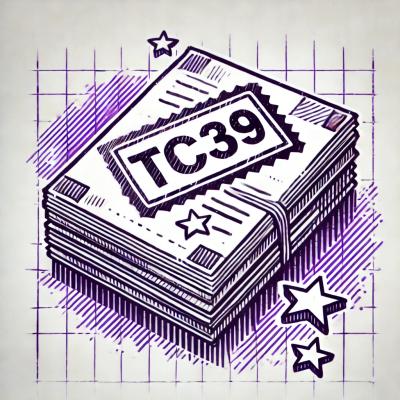gofpdf




Package gofpdf implements a PDF document generator with high level support for
text, drawing and images.
##Features
- Choice of measurement unit, page format and margins
- Page header and footer management
- Automatic page breaks, line breaks, and text justification
- Inclusion of JPEG, PNG, GIF and basic path-only SVG images
- Colors, gradients and alpha channel transparency
- Outline bookmarks
- Internal and external links
- TrueType, Type1 and encoding support
- Page compression
- Lines, Bézier curves, arcs, and ellipses
- Rotation, scaling, skewing, translation, and mirroring
- Clipping
- Document protection
- Layers
- Templates
gofpdf has no dependencies other than the Go standard library. All tests pass
on Linux, Mac and Windows platforms. Like FPDF version 1.7, from which gofpdf
is derived, this package does not yet support UTF-8 fonts. However, support is
provided to translate UTF-8 runes to code page encodings.
##Installation
To install the package on your system, run
go get github.com/jung-kurt/gofpdf
Later, to receive updates, run
go get -u github.com/jung-kurt/gofpdf
##Quick Start
The following Go code generates a simple PDF file.
pdf := gofpdf.New("P", "mm", "A4", "")
pdf.AddPage()
pdf.SetFont("Arial", "B", 16)
pdf.Cell(40, 10, "Hello, world")
err := pdf.OutputFileAndClose("hello.pdf")
See the functions in the fpdf_test.go file (shown as examples in this
documentation) for more advanced PDF examples.
##Errors
If an error occurs in an Fpdf method, an internal error field is set. After
this occurs, Fpdf method calls typically return without performing any
operations and the error state is retained. This error management scheme
facilitates PDF generation since individual method calls do not need to be
examined for failure; it is generally sufficient to wait until after Output()
is called. For the same reason, if an error occurs in the calling application
during PDF generation, it may be desirable for the application to transfer the
error to the Fpdf instance by calling the SetError() method or the SetErrorf()
method. At any time during the life cycle of the Fpdf instance, the error state
can be determined with a call to Ok() or Err(). The error itself can be
retrieved with a call to Error().
##Conversion Notes
This package is a relatively straightforward translation from the original FPDF library written in PHP (despite the caveat in the introduction to Effective
Go). The API names have been retained even though the Go idiom would suggest
otherwise (for example, pdf.GetX() is used rather than simply pdf.X()). The
similarity of the two libraries makes the original FPDF website a good source
of information. It includes a forum and FAQ.
However, some internal changes have been made. Page content is built up using
buffers (of type bytes.Buffer) rather than repeated string concatenation.
Errors are handled as explained above rather than panicking. Output is
generated through an interface of type io.Writer or io.WriteCloser. A number of
the original PHP methods behave differently based on the type of the arguments
that are passed to them; in these cases additional methods have been exported
to provide similar functionality. Font definition files are produced in JSON
rather than PHP.
##Example PDFs
A side effect of running "go test ./..." is the production of a number of
example PDFs. These can be found in the gofpdf/pdf directory after the tests
complete.
Please note that these examples run in the context of a test. In order run an
example as a standalone application, you'll need to examine fpdf_test.go for
some helper routines, for example exampleFilename() and summary().
Example PDFs can be compared with reference copies in order to verify that they
have been generated as expected. This comparison will be performed if a PDF
with the same name as the example PDF is placed in the gofpdf/pdf/reference
directory. The routine that summarizes an example will look for this file and,
if found, will call ComparePDFFiles() to check the example PDF for equality
with its reference PDF. If differences exist between the two files they will be
printed to standard output and the test will fail. If the reference file is
missing, the comparison is considered to succeed. In order to successfully
compare two PDFs, the placement of internal resources must be consistent and
the internal creation timestamps must be the same. To do this, the methods
SetCatalogSort() and SetCreationDate() need to be called for both files. This
is done automatically for all examples.
##Nonstandard Fonts
Nothing special is required to use the standard PDF fonts (courier, helvetica,
times, zapfdingbats) in your documents other than calling SetFont().
In order to use a different TrueType or Type1 font, you will need to generate a
font definition file and, if the font will be embedded into PDFs, a compressed
version of the font file. This is done by calling the MakeFont function or
using the included makefont command line utility. To create the utility, cd
into the makefont subdirectory and run "go build". This will produce a
standalone executable named makefont. Select the appropriate encoding file from
the font subdirectory and run the command as in the following example.
./makefont --embed --enc=../font/cp1252.map --dst=../font ../font/calligra.ttf
In your PDF generation code, call AddFont() to load the font and, as with the
standard fonts, SetFont() to begin using it. Most examples, including the
package example, demonstrate this method. Good sources of free, open-source
fonts include Google Fonts and DejaVu Fonts.
##Related Packages
The draw2d package is a two dimensional
vector graphics library that can generate output in different forms. It uses
gofpdf for its document production mode.
##Contributing Changes
gofpdf is a global community effort and you are invited to make it even better.
If you have implemented a new feature or corrected a problem, please consider
contributing your change to the project. A contribution that does not directly
pertain to the core functionality of gofpdf should be placed in its own
directory directly beneath the contrib directory.
Here are guidelines for making submissions. Your change should
- be compatible with the MIT License
- be properly documented
- be formatted with
go fmt
- include an example in fpdf_test.go if appropriate
- conform to the standards of golint and
go vet, that is,
golint . and
go vet . should not generate any warnings
- not diminish test coverage
Pull requests work
nicely as a means of contributing your changes.
##License
gofpdf is released under the MIT License. It is copyrighted by Kurt Jung and
the contributors acknowledged below.
##Acknowledgments
This package's code and documentation are closely derived from the FPDF library created by Olivier Plathey, and a number of font and
image resources are copied directly from it. Drawing support is adapted from
the FPDF geometric figures script by David Hernández Sanz. Transparency
support is adapted from the FPDF transparency script by Martin Hall-May.
Support for gradients and clipping is adapted from FPDF scripts by Andreas
Würmser. Support for outline bookmarks is adapted from Olivier Plathey by
Manuel Cornes. Layer support is adapted from Olivier Plathey. Support for
transformations is adapted from the FPDF transformation script by Moritz Wagner
and Andreas Würmser. PDF protection is adapted from the work of Klemen
Vodopivec for the FPDF product. Lawrence Kesteloot provided code to allow an
image's extent to be determined prior to placement. Support for vertical
alignment within a cell was provided by Stefan Schroeder. Ivan Daniluk
generalized the font and image loading code to use the Reader interface while
maintaining backward compatibility. Anthony Starks provided code for the
Polygon function. Robert Lillack provided the Beziergon function and corrected
some naming issues with the internal curve function. Claudio Felber provided
implementations for dashed line drawing and generalized font loading. Stani
Michiels provided support for multi-segment path drawing with smooth line
joins, line join styles, enhanced fill modes, and has helped greatly with
package presentation and tests. Templating is adapted by Marcus Downing from
the FPDF_Tpl library created by Jan Slabon and Setasign. Jelmer Snoeck
contributed packages that generate a variety of barcodes and help with
registering images on the web. Additionally, he augmented the basic HTML
functionality with aligned text. Kent Quirk implemented backwards-compatible
support for reading DPI from images that support it, and for setting DPI
manually and then having it properly taken into account when calculating image
size. Bruno Michel has provided valuable assistance with the code.
##Roadmap
- Handle UTF-8 source text natively. Until then, automatic translation of
UTF-8 runes to code page bytes is provided.
- Improve test coverage as reported by the coverage tool.





